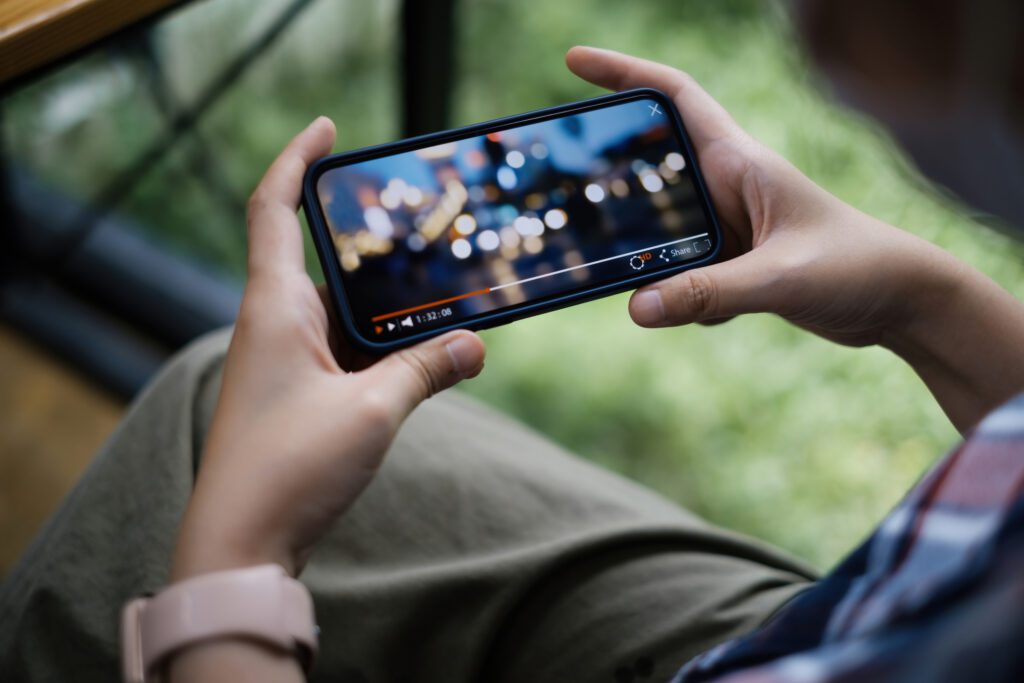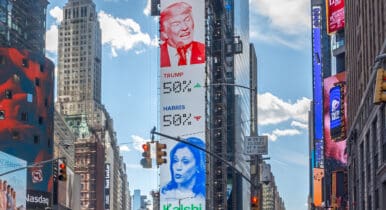Designing for Multiple Platforms and Breaking Down Silos

In some ways, Karin Scott has the ideal creative role. Serving as a designer and digital buyer, she’s tasked with building audiences for the creative she’s also producing. A primarily self-taught designer, the George Washington University grad landed at Narrative Strategies as an intern in the summer of 2020, shortly after the firm was founded.
After asking to try her hand at graphic design projects, she started building a portfolio with a few different clients. The requests started to grow, she got hired as an associate and kept doing creative work. A year and half ago, the firm got more into digital. Now, she serves as the advocacy shop’s digital marketing manager within a full creative division.
C&E: Tell us about your work at Narrative.
Scott: My role has evolved a lot from that traditional PR role to creative content, and now I mainly work in digital. I’ve designed billboards and digital display ads. I’ve done video series and infographics linked behind social media graphics, employee booklets and annual reports. I’ve been lucky enough to have that opportunity to do a lot of different types of creative content.
C&E: What’s your approach to designing for different platforms?
Scott: It’s always different. If I place a Twitter ad versus programmatic display, the reaction’s gonna be pretty different. I like to think of graphic design in terms of ad creative as not necessarily just being a matter of preferences, and what looks good, but it’s actually rooted in things like user expectations and psychology. So we are always thinking about the user and how they’re gonna respond to something. And part of that is the platform that they’re on.
An audience might respond really, really well to an ad on Twitter, but entirely differently to an ad on LinkedIn because they’re bringing those different expectations. So what we’ve found is that we need to have different creative by the platform, not only by the audience, in order to create something that’s very impactful.
C&E: A lot of issue advertisers are coming back to Twitter, what’s been working for your clients?
Scott: Text-only ads, which I know might sound a little weird. Historically, it’s always been you want to have a graphic or a video along with your advertisement on Twitter. But what we know is that when a user comes onto Twitter, a lot of what they see is going to be solely text-based. And one thing that we need to be very conscious of is the fact that people are getting really good at spotting advertisements and recognizing them right away and immediately scrolling past. No one wants to see an ad when they’re trying to do something else.
C&E: What about on LinkedIn?
Scott: LinkedIn is really important for a lot of our clients, not only just because of the nature of the platform, but because of its targeting options. LinkedIn, unlike Twitter, will let you really drill down and target people by their job title and their company, which has been really valuable for a lot of our campaigns. We see pretty high engagement. There is a big delivery issue, though, that I think LinkedIn has been trying to solve.
It physically doesn’t have enough users to serve all of the ad content that’s run on its platform. And if people aren’t coming to the platform every day, it’s really hard to get your reach and frequency numbers up, which is partially why I think you’ll see lower conversions when it comes to the call to action. In terms of the creative, specifically, I’m seeing more clients ask for things like gradients.
C&E: Where do you look for inspiration?
Scott: Honestly, Reddit has a lot of graphic design threads. Typically, if I ran into an issue on a certain design platform, I’d Google it and there would always be a Reddit thread pop up. And it was kind of cool to see these vast communities where people are instantly jumping in and helping each other and helping people figure things out. You’ll also see Reddit threads where people are sort of showing their work and then inviting other people to provide feedback or creative suggestions, which I think is really awesome.
I think in a lot of professional communities you don’t necessarily have that cohesive bond across companies, but what I’ve found within the graphic design and creative community is that it’s very much a collaborative one. People want to help each other. And the sharing of knowledge and resources has been great to see and be involved in.
C&E: What platform or format do you see as the go-to for advocacy clients in 2023-24?
Scott: I think it’s less about the format and the medium of the content than it is about the tone. I think we could start seeing companies getting a little bit more direct, having a little bit more fun with their advertising. Especially on TikTok and Twitter, social media managers running brand accounts are commenting on people’s posts and, and they’re being funny and relatable. We’ve seen sort of that emergence of corporations having more of a personality when it comes to social media and advertising, whereas before it was more formal, and social media was sort of treated almost as a repository for press releases and corporate announcements.
I think we’re gonna start seeing advertising become a little bit more personable in order to be more impactful. People see in a 24-hour period roughly 10,000 ads. So in order to stand out, you have to be memorable and you have to be personable. You have to present something that someone can relate to. You don’t wanna be boring in today’s advertising environment.



